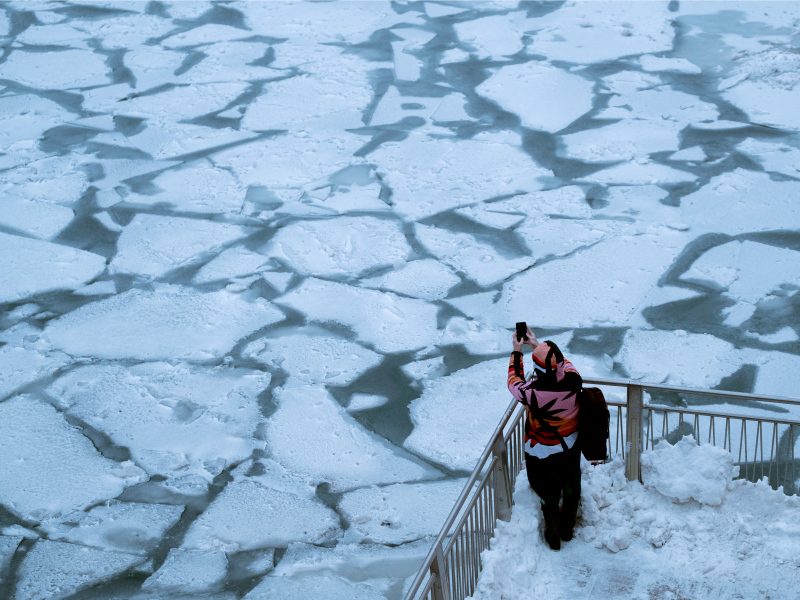- Cities in Minnesota, Wisconsin, Michigan, and Illinois continue to see subzero temperatures thanks to the recent polar-vortex event.
- Officials have warned people to avoid going outside because frostbite and hypothermia could set in within minutes.
- Some temperatures have gotten as low as minus 66 degrees Fahrenheit with windchill – that’s colder than Antarctica, according to the Weather Channel.
- Here’s what the areas hit hardest by the polar-vortex event look like right now.
As the polar vortex continues, many social-media users in the Midwest have added Antarctica to their weather apps, just so they can share images like this:

It’s proof that the temperatures they’re experiencing are colder than those on the planet’s southernmost continent.
But perhaps more startling than the numbers are the images emerging from the cities and states experiencing this intense cold.
Lake Michigan looks like something out of the movie "The Day After Tomorrow." In Chicago, workers lit kerosene-soaked ropes on fire next to frozen train tracks in order to keep trains running.
Here's what the reality of the polar-vortex event looks like on the ground.
Lake Michigan has started to freeze. Temperatures were so low that parts of the lake froze over entirely.

Ice quickly formed along the lakeshore.

The cold snap has prompted school and university closures, flight cancellations, and the suspension of mail-delivery services throughout the Midwest.

The lake water has even frozen into odd shapes in some places.

Over Lake Michigan, a fog has formed. This fog, sometimes called sea smoke or sea fog, can happen when extremely cold air blows over water that's warmer.

Windchill temperatures in Chicago reached minus 55 degrees Fahrenheit on Wednesday morning, well below the temperature of the water.

Lakeside buoys were encased in ice.

Despite officials' warning of "life-threatening" temperatures, some people have ventured out to take photos.

Ice floes float on the Chicago River, which winds through the city.

Frostbite can set in within minutes in this extreme cold, according to the National Weather Service. But the cold didn't stop Chicagoans.

More than 1,700 flights were canceled at Chicago's two airports, O'Hare and Midway.

Keeping the Metra commuter trains moving was challenging, too.

Workers for Chicago's commuter rail system went to extreme measures to keep the trains running, lighting fires next to frozen tracks.

The tracks contract in extreme cold, causing breaks in the line — hence the need for extra heat.

The weather in Minnesota is perhaps the worst of any US state.

Windchill temperatures hit minus 66 degrees Fahrenheit on Tuesday evening.

The winter weather conditions in Minnesota are causing highway accidents.

The weather in nearby Wisconsin was a little warmer — the overnight low was minus 31 degrees Fahrenheit.

The freezing conditions did not deter some Wisconsin commuters from their daily rides.

Icicles formed on a railing at the Lake Michigan harbor in Port Washington, Wisconsin, on Wednesday morning. The area experienced minus 50 degree windchill temperatures.

These cold temperatures are a result of the polar vortex — a ring of frigid air that circulates above the Arctic.

Sometimes during the winter, streams of air from the polar vortex move south toward the US and Canada.

The National Weather Service expects the polar vortex to continue bringing dangerously low temperatures through at least Friday.


